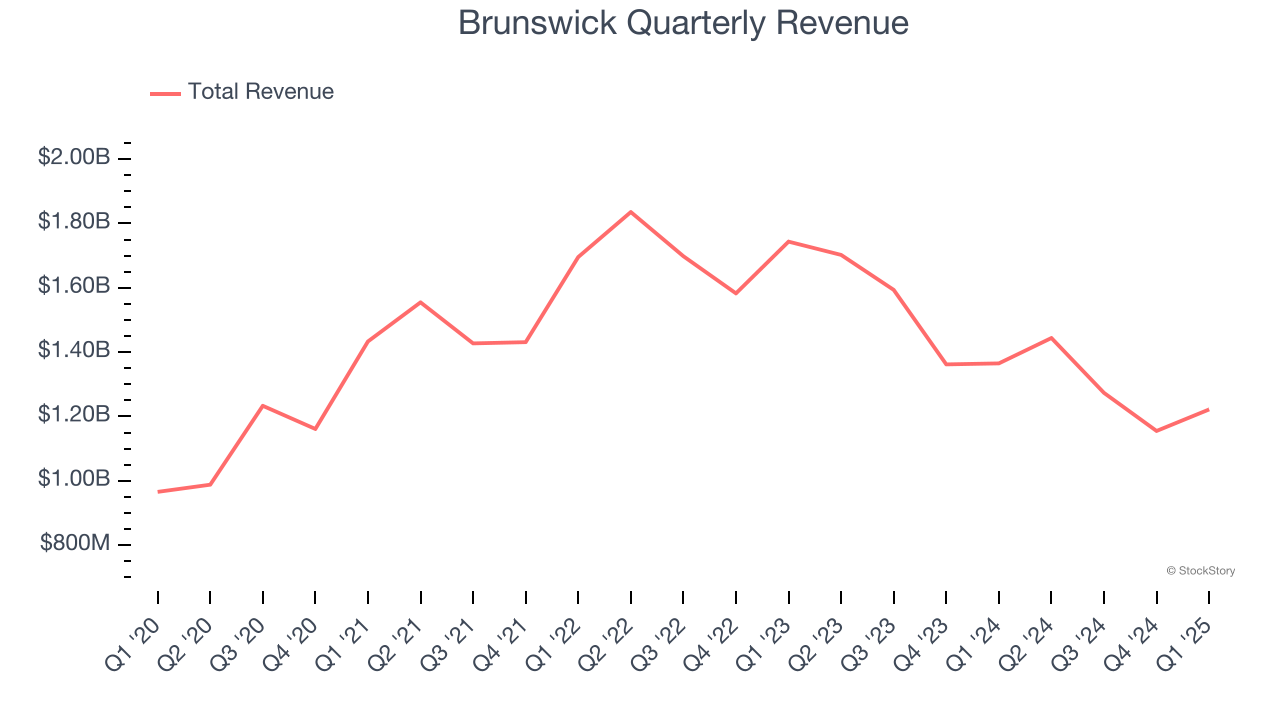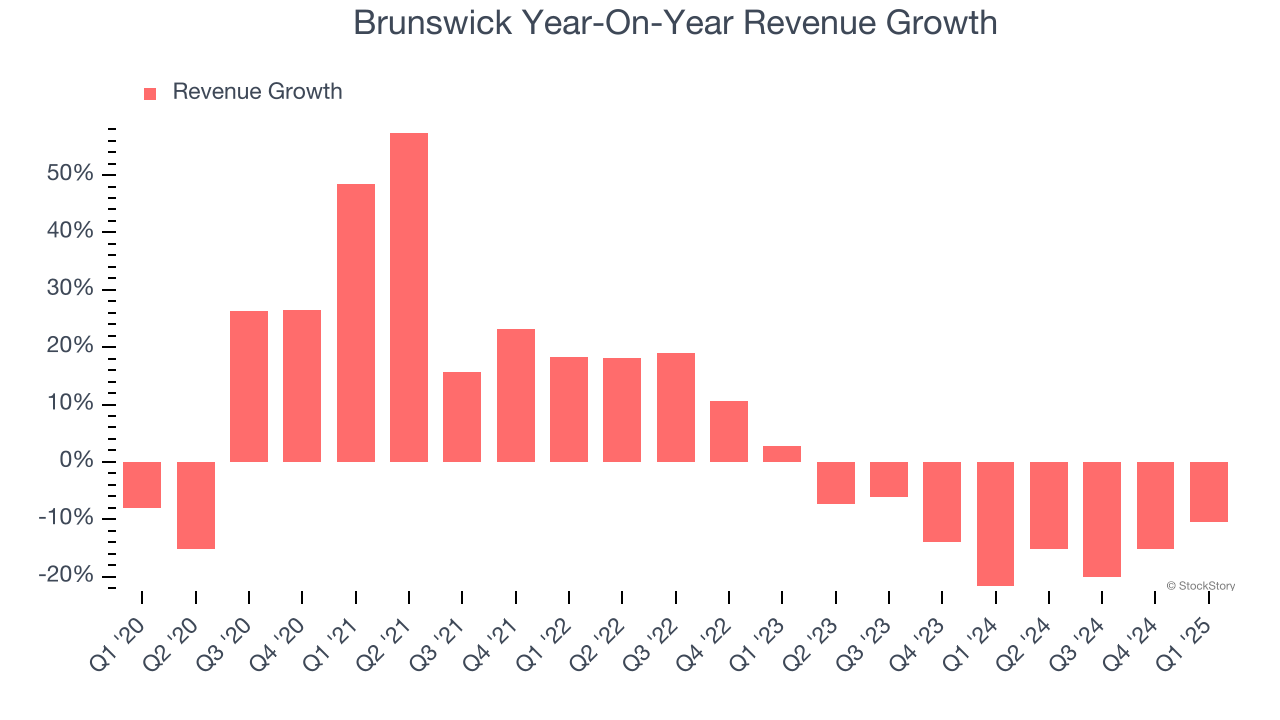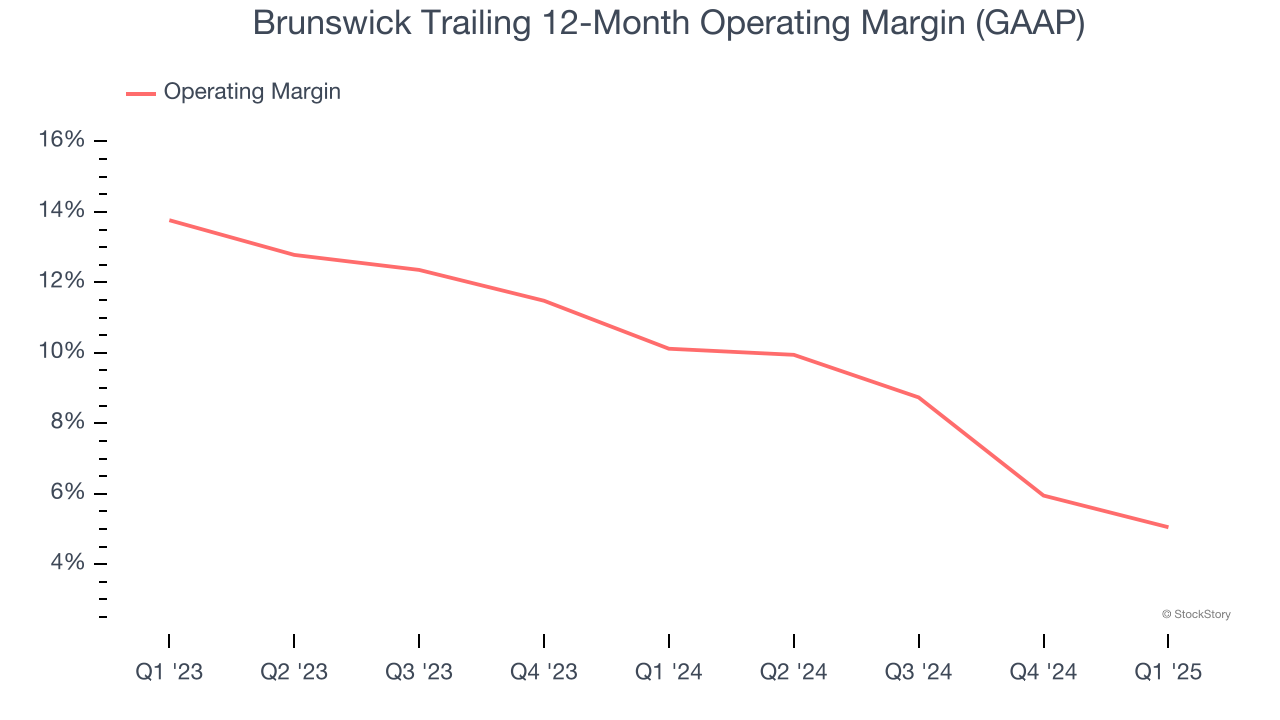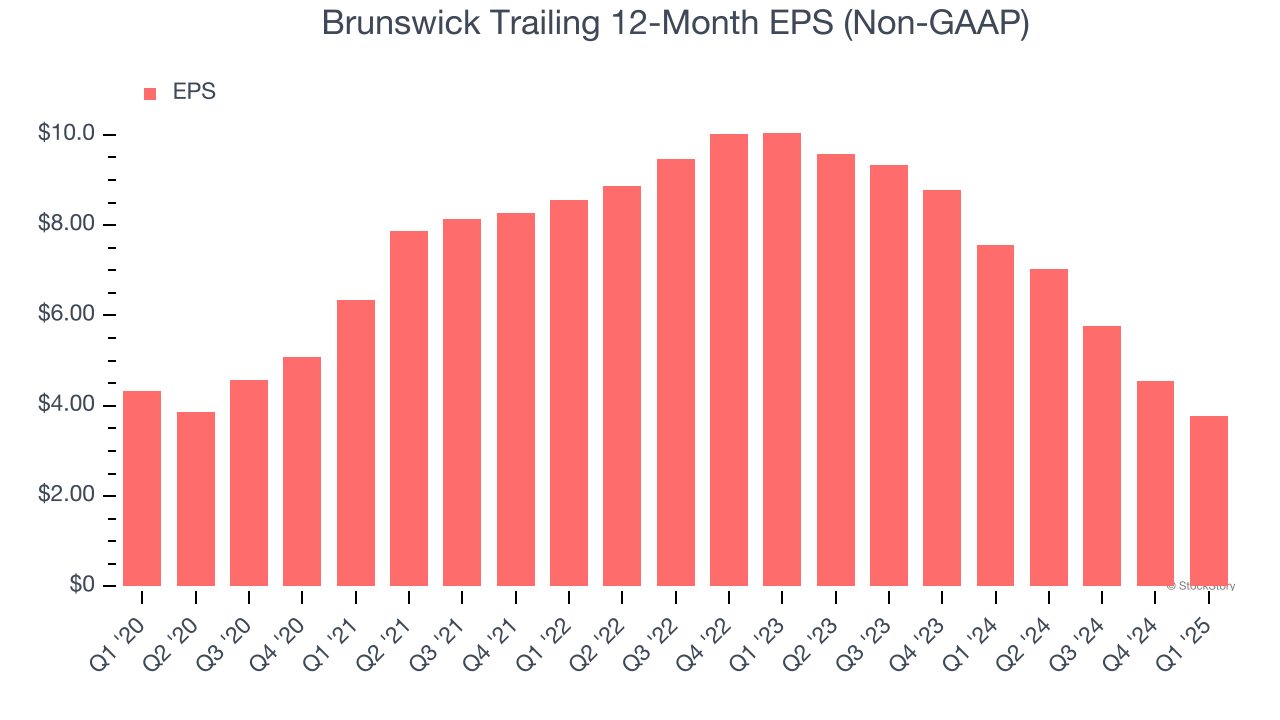
Boat and marine manufacturer Brunswick (NYSE:BC) beat Wall Street’s revenue expectations in Q1 CY2025, but sales fell by 10.5% year on year to $1.22 billion. On the other hand, next quarter’s revenue guidance of $1.2 billion was less impressive, coming in 17.1% below analysts’ estimates. Its non-GAAP profit of $0.56 per share was significantly above analysts’ consensus estimates.
Is now the time to buy Brunswick? Find out by accessing our full research report, it’s free.
Brunswick (BC) Q1 CY2025 Highlights:
- Revenue: $1.22 billion vs analyst estimates of $1.13 billion (10.5% year-on-year decline, 7.9% beat)
- Adjusted EPS: $0.56 vs analyst estimates of $0.22 (significant beat)
- The company dropped its revenue guidance for the full year to $5.2 billion at the midpoint from $5.4 billion, a 3.7% decrease
- Management lowered its full-year Adjusted EPS guidance to $3.25 at the midpoint, a 23.5% decrease
- Operating Margin: 4.6%, down from 8.1% in the same quarter last year
- Free Cash Flow was -$44.4 million compared to -$207.4 million in the same quarter last year
- Market Capitalization: $2.98 billion
Company Overview
Formerly known as Brunswick-Balke-Collender Company, Brunswick (NYSE: BC) is a designer and manufacturer of recreational marine products, including boats, engines, and marine parts.
Leisure Products
Leisure products cover a wide range of goods in the consumer discretionary sector. Maintaining a strong brand is key to success, and those who differentiate themselves will enjoy customer loyalty and pricing power while those who don’t may find themselves in precarious positions due to the non-essential nature of their offerings.
Sales Growth
Reviewing a company’s long-term sales performance reveals insights into its quality. Any business can put up a good quarter or two, but many enduring ones grow for years. Unfortunately, Brunswick’s 4.8% annualized revenue growth over the last five years was sluggish. This fell short of our benchmark for the consumer discretionary sector and is a tough starting point for our analysis.

We at StockStory place the most emphasis on long-term growth, but within consumer discretionary, a stretched historical view may miss a company riding a successful new product or trend. Brunswick’s performance shows it grew in the past but relinquished its gains over the last two years, as its revenue fell by 13.8% annually. 
This quarter, Brunswick’s revenue fell by 10.5% year on year to $1.22 billion but beat Wall Street’s estimates by 7.9%. Company management is currently guiding for a 16.9% year-on-year decline in sales next quarter.
Looking further ahead, sell-side analysts expect revenue to grow 3.7% over the next 12 months. Although this projection suggests its newer products and services will fuel better top-line performance, it is still below the sector average.
Software is eating the world and there is virtually no industry left that has been untouched by it. That drives increasing demand for tools helping software developers do their jobs, whether it be monitoring critical cloud infrastructure, integrating audio and video functionality, or ensuring smooth content streaming. Click here to access a free report on our 3 favorite stocks to play this generational megatrend.
Operating Margin
Operating margin is an important measure of profitability as it shows the portion of revenue left after accounting for all core expenses – everything from the cost of goods sold to advertising and wages. It’s also useful for comparing profitability across companies with different levels of debt and tax rates because it excludes interest and taxes.
Brunswick’s operating margin has been trending down over the last 12 months and averaged 7.8% over the last two years. The company’s profitability was mediocre for a consumer discretionary business and shows it couldn’t pass its higher operating expenses onto its customers.

This quarter, Brunswick generated an operating profit margin of 4.6%, down 3.5 percentage points year on year. This contraction shows it was less efficient because its expenses increased relative to its revenue.
Earnings Per Share
Revenue trends explain a company’s historical growth, but the long-term change in earnings per share (EPS) points to the profitability of that growth – for example, a company could inflate its sales through excessive spending on advertising and promotions.
Sadly for Brunswick, its EPS declined by 2.7% annually over the last five years while its revenue grew by 4.8%. This tells us the company became less profitable on a per-share basis as it expanded due to non-fundamental factors such as interest expenses and taxes.

In Q1, Brunswick reported EPS at $0.56, down from $1.35 in the same quarter last year. Despite falling year on year, this print easily cleared analysts’ estimates. Over the next 12 months, Wall Street expects Brunswick’s full-year EPS of $3.77 to grow 16%.
Key Takeaways from Brunswick’s Q1 Results
We were impressed by how significantly Brunswick blew past analysts’ revenue and EPS expectations this quarter. On the other hand, it lowered its full-year revenue and EPS guidance. Overall, this was a softer quarter. The stock remained flat at $45 immediately after reporting.
Brunswick’s latest earnings report disappointed. One quarter doesn’t define a company’s quality, so let’s explore whether the stock is a buy at the current price. The latest quarter does matter, but not nearly as much as longer-term fundamentals and valuation, when deciding if the stock is a buy. We cover that in our actionable full research report which you can read here, it’s free.
